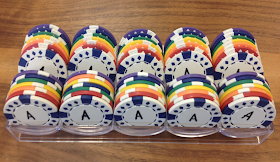It’s the middle of the summer, but the first
day of school will be here soon and it’s never too early to plan. What should
my students do in music on the first day? It’s important to consider objectives
prior to formulating a plan. My first day objectives are for the students to get excited about music and learn basic procedures that will make the
class run smoothly for the rest of the year.
A typical first day in my K-3 classroom has
the following activities: (I swap out a few activities in my 4-6 classes, but
still incorporate some name games.)
1. Welcome students
I greet classes at the door and instruct students where they need to be seated. I generally have them enter single-file and make a semi-circle on the edge of the carpet. This is not the time to discuss discipline,
unless there are issues that need to be addressed.
2. Get moving
After a brief welcome and introduction, perform a simple song that incorporates some
type of movement. A call and response song with motions is a good idea, so students can participate immediately.
3. Assign Seats
Assigned seating makes it easier to learn/remember names and it reduces behavior issues.
I alphabetize students by first name, because it helps me remember their names
better. I always reserve the right to reassign seats, if discipline issues
arise.
4. Play a Name Game
Incorporate instruments when appropriate. You
may view my previous post, “Getting to Know You”, for some of my favorite name
games.
5. Know Your Place!
Play a memory game for younger grades to help
them remember where they sit. Discuss quick guidelines for moving
(Demonstrate how to move – show good and bad choices and discuss boundaries,
safety, space-bubble, etc.)
- Move around carpet to steady beat while
music plays
- Freeze when keyboard stops (at this
point, continue movement activity or end by playing "tip-toe" music)
- Tiptoe back to seat at special
melody (I play a certain melody in a high range - always the same song)
6. Be a Star Student
Discuss positive behavior expectations for
the classroom. If discipline problems arise, this may need to happen earlier.
If the class runs smoothly, go over the first few rules and complete the list
in the following class for younger grades. In older grades that have been in my
classroom, I typically go over the expectations quicker. Each expectation has a
gesture, and we do the movement and say them all in order together. For a list
of my expectations, free visuals, and a video of the movements, see my previous
post, “Star Students”.
7. Sound Cues
Introduce the cues to K, and review for older
students Specific pitch intervals are sung or played and students respond with
the appropriate movement. When introducing each cue, words are sung that instruct
the students what to do. Later, they will be able to following cues without the
words.
- Stand up (sol- high do) (g1-c2)
- Turn around (all high do-re-do)
(c2-d2-c2)
- Jump up (high do- high so) (c2-g2)
- Lie down (do- low sol) (c1-g)
- Later, add Sit up (low sol-do) (g-c1),
but it can be easily confused with “stand up”, since they are the same interval
in different octaves.
8. Line Up
Discuss proper way to line up, exit, etc.
If time allows, another song or activity can
be added to the lesson plan.
Next week
The following week, I take pictures of each
student with my iPad to enter into the app, TeacherKit. It is a great tool that
allows you to put photos of students and place them in a seating chart to
assist with names. It can also be used for tracking progress on objectives. You
can learn more about it in my previous post, “4 Apps 4 Teachers”.
I hope this helps get your creative juices
flowing with ideas for getting music off to a great start. Enjoy the rest of
your summer!























